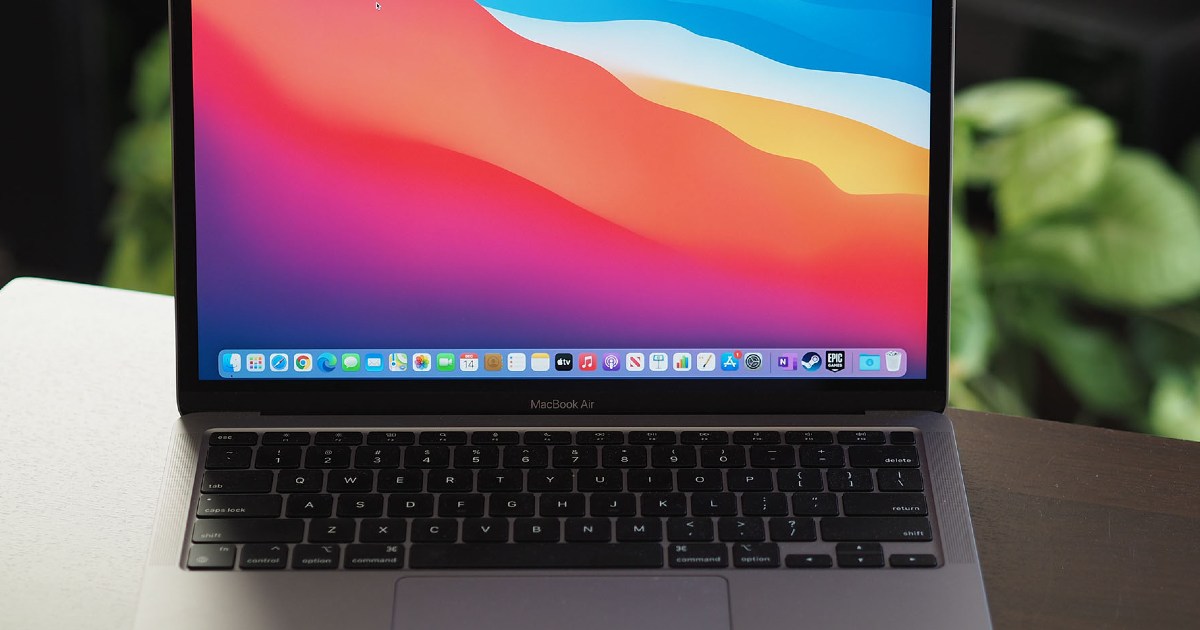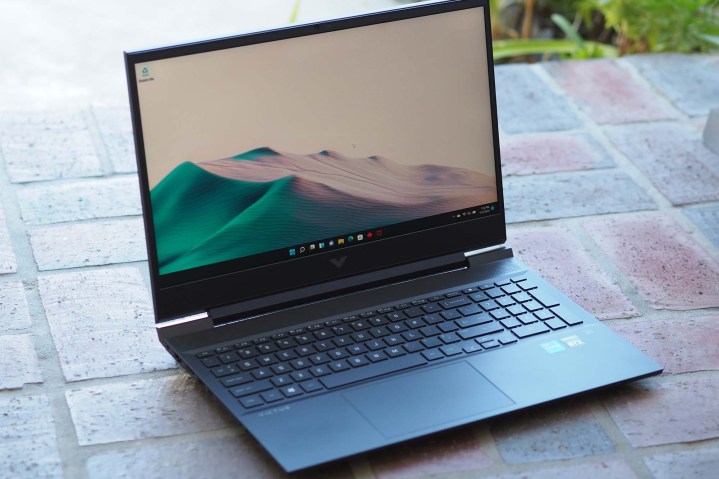For the better part of this year, Project 2025 has been a catchall among Democrats for the threat former President Donald Trump poses to American society. The more than 900-page Mandate for Leadership, crafted by conservative think tank the Heritage Foundation, is a sprawling and often contradictory mix of ideas from more than 100 organizations. It’s tied together not by unified policy predictions but by a series of preoccupations: China; “wokeness”; climate denialism; and a commitment to gutting or abolishing federal agencies. It includes plans that would remake America’s approach to technology, but like many things in the document, its authors can’t exactly agree on how.
Technology
The grievance-driven blueprint for the next Trump administration

Trump has attempted to distance himself from the policy plan, but it’s tied to him by numerous threads. His running mate, JD Vance, is friends with Kevin Roberts, the president of the Heritage Foundation, and Vance even wrote the introduction to Roberts’ forthcoming book, Dawn’s Early Light. (The book’s publication, initially slated for September, was postponed until after the election.) And some of Project 2025’s chapters were written by Trump’s own former administration officials, including FCC commissioner Brendan Carr and Department of Homeland Security official Ken Cuccinelli.
If Trump is elected, it’s highly likely that some of Project 2025’s ideas would be implemented — we just don’t know which ones. The most provocative proposals, like banning pornography, are prominently highlighted but never explained. Authors, in turn, recommend fighting and embracing tech companies. “I don’t think I’ve encountered a single person in America who agrees with 100 percent,” Roberts said at the Reboot Conference in San Francisco in September. “It’s like the menu at the Cheesecake Factory.”
Much of what’s on the menu is notably less delicious. We’re not going to break down every piece of Project 2025 here — you can find more general guides at CBS News, which showed how many of Project 2025’s policy recommendations match Trump’s own; ProPublica, which obtained secret training videos created for Project 2025’s Presidential Administration Academy; and The New York Times, which interviewed several former Trump officials involved in the creation of Project 2025. Instead, we’re taking a look at how its recommendations would affect tech at every level, from how companies can hire foreign workers to the social media platforms we use every day.
Though there are some contradictions between and within chapters — signs of fissures or points of contention among the dozens of participating organizations — Project 2025 does, in the end, amount to a coherent vision. The document calls for a radical expansion of government power to punish conservatives’ enemies in tech, oust potential dissenters within the federal bureaucracy, and enforce right-wing wish list items like mass deportations and a national abortion ban. All of this would be combined with mass deregulation and the defunding of social services and federal agencies that contribute to the public welfare. Project 2025’s authors want small government for social goods — but big government for retribution.
Federal Trade Commission
Authored by: Adam Candeub, a professor of law at Michigan State University. Candeub served as the acting assistant secretary of commerce for telecommunications and information under Trump. From 2020 to 2021, he was the deputy associate attorney general in Trump’s Department of Justice.
Project 2025’s FTC guidelines are perhaps the clearest example of conservative ambivalence toward tech. The section doesn’t actually offer a set of policy proposals. Instead, it outlines two diametrically opposed approaches: one where the Trump administration fiercely enforces antitrust law to break up monopolies; and another where it does barely anything at all.
In the enforcement route, Project 2025 suggests using the FTC to rein in major corporations, especially big tech companies. It puts forward the European Union’s “less friendly regulatory environment” as a good model, possibly referring to EU laws like the Digital Markets Act, which have forced tech companies to make major hardware and software changes to their products. It encourages the FTC to partner with state attorneys general to scrutinize or block hospital, supermarket, and big tech mergers. And it recommends that the FTC look into whether social media platforms’ advertising to and contract-making with children constitute unfair trade practices.
While there’s overlap with Democratic antitrust priorities here, there’s also a focus on clearly partisan concerns. The chapter suggests investigating whether social media platforms censored political speech in collusion with the government, following up on probes by the Republican-led House of Representatives and Republican state attorneys general. (Hunter Biden’s laptop, unsurprisingly, gets a mention.) You’ll also see references to issues like the “de-banking” of controversial figures, which the Trump family has cited as an inspiration for its mysterious crypto platform. “We are witnessing in today’s markets the use of economic power — often market and perhaps even monopoly power — to undermine democratic institutions and civil society,” the chapter claims.
Each of these points is contradicted by a long-standing conservative counterpoint: the government should let the market regulate itself. If the FTC regulates how children use internet platforms, for example, it could undermine conservatives’ calls for “parental empowerment on education or vaccines.” Expanding cooperation between the FTC and state attorneys general could “tie middle America to big progressive government.”
Ultimately, though, the chapter seems to favor intervention. Conservatives “cannot unilaterally disarm and fail to use the power of government to further a conservative agenda,” it warns, even if their goal is to do away with the regulatory state.
Federal Communications Commission
Authored by: Brendan Carr, a member of the Federal Communications Commission who was appointed by Trump in 2017.
Much of this chapter focuses on “reining in” major tech companies. Carr proposes a host of policies, including eliminating certain immunities under Section 230 of the Communications Decency Act and “clarifying” that Section 230’s key 26 words should only be used in cases about platforms failing to remove illegal material posted by users, not as a broader shield for moderation decisions.
Carr’s real concern is with social media platforms’ alleged suppression of conservative speech. The chapter suggests requiring “Big Tech” to follow net neutrality-like rules similar to those for broadband providers, like disclosure on practices such as blocking and prioritizing content. Platforms should also be required to “offer a transparent appeals process” when user content is taken down.
The chapter also suggests that the FCC regulatory power should be expanded with “fundamental Section 230 reforms” that let it regulate how online platforms moderate content — or, in Carr’s words, “no longer have carte blanche to censor protected speech.” Carr describes Texas’ HB 20 — the law that forbids platforms from removing, demonetizing, or downlinking posts based on “viewpoint,” which set the stage for NetChoice v. Paxton — as a possible model for federal legislation.
As companies must stop “censoring” conservative speech, they’re supposed to restrict children from accessing certain social media platforms. Carr quickly notes that these views “are not shared uniformly by all conservatives,” but as is the case in other chapters, the notion of expanding government powers to punish right-wing opponents ends up winning out over a more laissez-faire approach.
Congress should also require big tech to pay into the FCC’s Universal Service Fund, which helps fund broadband access in rural communities and is currently funded by broadband providers. It’s another example of Project 2025’s movement away from Reagan-era “small government” conservatives in favor of punishing disfavored targets with more regulation.
The chapter also recommends that the FCC and White House work together to free additional airwaves for commercial wireless services and generally do more to “move spectrum into the commercial marketplace.” Carr also recommends that the government build out internet infrastructure on federally owned land. The latter, however, can’t be accomplished by the FCC alone, and Carr notes that it would require working with the Bureau of Land Management and the Forest Service, among other agencies. The chapter also recommends that the FCC more quickly review and approve applications to launch new satellites, specifically for the purposes of supporting StarLink, Kuiper, and similar efforts.
And then there’s China. One of the primary recommendations is that the FCC “address TikTok’s threat to national security.” (Congress has, since the time the Mandate for Leadership was published, done just that by attempting to ban the app unless it divests from its parent company, ByteDance; whether the courts will let that happen remains to be seen.) Others include creating a more regular process to review entities “with ties to the CCP’s surveillance state” and stopping US entities “from indirectly contributing to China’s AI goals.”
Financial regulatory agencies
Authored by: David R. Burton, a senior research fellow in economic policy at the Heritage Foundation; and Robert Bowes, a senior adviser to the assistant secretary of the Department of Housing and Urban Development under Trump and former adviser to Trump aide Stephen Miller.
While other sections are often ambivalent about government regulation, this chapter straightforwardly suggests giving major concessions to cryptocurrency and loosening restrictions on who can invest in private companies.
Anyone who’s been following Trump’s attempts to court the crypto community should know what’s coming here. There are a host of recommendations for the Securities and Exchange Commission, which the authors say has “chosen regulation by enforcement” for cryptocurrency. The biggest change would be redefining digital assets as commodities, instead of securities, so they’re no longer regulated by the SEC.
The chapter also recommends making private capital raising less restrictive by changing a rule known as Regulation D. Under Regulation D, companies can raise unlimited funds for securities from an unlimited number of “accredited investors,” with no disclosure needed to the SEC. “Accredited investors” must currently have a salary of $200,000 (or $300,000 combined with their spouse) or a net worth of at least $1 million, excluding their primary residence. As of 2022, more than 24 million American households met these requirements. Project 2025 recommends broadening these qualifications or eliminating them altogether.
In practice, this would let anyone invest in any private company, not just — as the rule stands today — companies on the public market. To go public, companies have to meet certain requirements and file a registration statement with the SEC, where they’re subject to reporting requirements. In exchange, they currently get access to a much broader pool of potential investors. Eliminating the accredited investor requirement would effectively allow companies to skirt the requirements of going public — and the oversight they’re subject to afterward.
Department of Commerce
Authored by: Thomas F. Gilman, the director of ACLJ Action, a conservative organization affiliated with the American Center for Law and Justice. Gilman was the chief financial officer and assistant secretary for administration of the US Department of Commerce under Trump.
This sprawling chapter touches on nearly every major Project 2025 theme, from fears of China to the “alarm industry” of federal climate monitoring. Like practically every other section, it recommends expanding the federal government’s reach if it will advance conservative interests and doing away with any agencies that don’t.
In keeping with the goal of dismantling federal bureaucracies, this chapter suggests doing away with the National Oceanic and Atmospheric Administration (NOAA), which it says should be privatized or placed under the control of states and territories. Other agencies, like the National Weather Service (NWS) and Office of Oceanic and Atmospheric Research, would be severely downsized. (In a statement provided to the Los Angeles Times, Steven R. Smith, the CEO of AccuWeather — which Project 2025 suggested could replace the NWS — said AccuWeather’s forecast engine partly relies on NOAA data.) These agencies provide the data used in weather forecasts accessed by millions of Americans each day and also give the public crucial information about impending hurricanes, heatwaves, and other natural disasters and extreme weather events.
The Republican libertarian wing may get its goal of privatizing federal agencies, but most of this chapter argues for more — not less — government interference in the market. Noting that China has made significant advances in semiconductor design, aerospace technologies, and other crucial industries, it recommends new rules to prevent tech transfer to foreign adversaries. It also suggests an executive order expanding the Export Control Reform Act of 2018 to restrict exports of Americans’ data. And it opposes intellectual property waivers for “cutting-edge technologies” like covid-19 vaccines — which an earlier chapter says the Centers for Disease Control and Prevention shouldn’t encourage people to get — through international agreements. These waivers, which were hotly debated for years following the onset of the pandemic, give low- and middle-income countries access to life-saving immunizations, though advocates say more needs to be done to achieve global vaccine equity.
The chapter also suggests adding certain app providers — including WeChat, TikTok, and TikTok’s parent company, ByteDance — to the entity list, which would prevent the apps from issuing program updates in the US, effectively making them nonoperational. The Heritage Foundation apparently didn’t get the memo that Trump loves TikTok now.
Department of Transportation
Authored by: Diana Furchtgott-Roth, director of the Heritage Foundation’s Center for Energy, Climate, and Environment.
Unlike other chapters that are openly antagonistic toward tech companies, this chapter suggests partnering with the private sector to “revolutionize travel.” There’s an emphasis on private transportation over public transportation — not just in terms of opposing government funding for mass transit but also supporting ridehailing apps, self-driving vehicles, and micromobility, which only gets a passing mention in the chapter but likely refers to e-bikes and electric scooters.
Current policies, the document says, “strangle the development of new technologies” like drones. Instead, the DOT should encourage the use of small aircraft for air taxis or for quiet vertical flights. It should also push for a shift to digital or remote control towers for planes, letting flights be managed “anywhere from anywhere.”
Department of the Treasury
Authored by: William L. Walton, a trustee of the Heritage Foundation and the founder and chair of the private equity firm Rappahannock Ventures LLC; Stephen Moore, a visiting fellow in economics at the Heritage Foundation; and David R. Burton, a senior research fellow in economic policy at the Heritage Foundation.
Under Project 2025, the US would effectively abandon its commitment to stopping climate change. The chapter suggests getting rid of the department’s Climate Hub office and withdrawing from international climate change agreements, including the Paris agreement and the United Nations Framework Convention on Climate Change. Instead of focusing on clean energy or climate change-resilient infrastructure, the chapter suggests that the government should invest in domestic energy, especially oil and gas.
Like several other sections, this chapter takes aim at “wokeness” and diversity, equity, and inclusion (DEI) programs. As part of Project 2025’s plan to gut the federal workforce, it suggests identifying all Treasury officials who have participated in DEI initiatives, publishing their communications about DEI, and firing anyone who participated in DEI initiatives “without objecting on constitutional or moral grounds.”
Department of Health and Human Services
Authored by: Roger Severino, a vice president at the Heritage Foundation and former director of its DeVos Center for Religion and Civil Society, who served as the director of the HHS’s Office of Civil Rights under Trump.
The bottom line: Project 2025 would limit the government’s ability to do basic health governance while setting up a surveillance state for pet conservative issues like abortion and gender-affirming care for trans people.
Much of the HHS chapter focuses on the Centers for Disease Control and Prevention’s response to covid-19, which the author characterizes as near totalitarian. The chapter recommends barring the CDC from saying that children should be masked or vaccinated against any illness and says that the CDC should be investigated for “colluding with Big Tech to censor dissenting opinions during Covid.” The author also suggests moving several CDC programs — including the Clinical Immunization Safety Assessment project, which researches vaccine safety — to the Food and Drug Administration.
Unsurprisingly, abortion would be severely restricted. Under Project 2025, the FDA would reverse the approval of pills that facilitate medication abortions, which the document calls the “single greatest threat to unborn children.” The FDA would also eliminate policies allowing people to order abortion pills by mail or online. As the CDC would stop encouraging vaccinations — which some conservatives believe infringe on bodily autonomy — the agency would increase its surveillance and recordkeeping of abortions and maternal mortality. This includes a recommendation that the HHS “use every available tool, including the cutting of funds” to force states to report “exactly how many abortions take place within its borders.”
A separate study, through the National Institutes of Health, is recommended to investigate the “short-term and long-term negative effects of cross-sex interventions,” i.e., gender-affirming care. The report also recommends using AI to detect Medicaid fraud, which costs the US an estimated $100 billion a year and is typically perpetrated by healthcare providers, not individual beneficiaries of public healthcare.
Department of Homeland Security
Authored by: Ken Cuccinelli, who served in various capacities under Trump, including as the director of US Citizenship and Immigration Services and, later, the “senior official performing the duties of the Deputy Secretary of Homeland Security.”
Perhaps counterintuitively given Republicans’ laser focus on the US border, Project 2025 recommends abolishing the Department of Homeland Security. The goal, though, is to replace it with the Border Security and Immigration Agency, a new, more draconian, and less accountable immigration enforcement apparatus.
The Transportation Security Administration (TSA) would be privatized, and the Coast Guard would be moved to either the Department of Defense or the Department of Justice. Dismantling the DHS almost certainly won’t happen — it would require an act of Congress, and lawmakers haven’t passed an immigration bill in decades.
Project 2025 doesn’t just recommend more stringent restrictions on unauthorized immigration; it also lays out a vision of severely restricted legal immigration. It recommends scrapping the family-based immigration system that has been in place since 1965 and replacing it with a “merit-based system that rewards high-skilled aliens.” Other suggestions include eliminating the diversity visa lottery and altering the work visa system. This, too, would largely require congressional action.
As it prioritizes “merit-based” immigration to the US, the chapter proposes limiting foreign students’ ability to study here. In a move that (unlike much of this chapter) could be accomplished through executive action, it proposes ending what it calls Immigration and Customs Enforcement’s (ICE) “cozy deference to educational institutions,” i.e., the issuing of student visas to most foreign students admitted to US universities. It also calls to “eliminate or significantly reduce the number of visas issued to foreign students from enemy nations” — implicitly, China.
Intelligence community
Authored by: Dustin J. Carmack, Meta’s director of public policy for the Southern and Southeastern US. Carmack, a former research fellow at the Heritage Foundation, was the chief of staff for the Office of the Director of National Intelligence under Trump from 2020 to 2021.
Concerns about China are far more explicit in this chapter, which looks at the “vast, intricate bureaucracy of intelligence agencies within the federal government.” The chapter raises the threat of Chinese (and to a lesser extent, Russian) espionage, online influence campaigns, and “legitimate businesses serving as collection platforms,” a possible allusion to TikTok. The Mandate for Leadership recommends amending Executive Order 12333 — which was signed by President Ronald Reagan in 1981 and, among other things, authorizes mass data collection for intelligence purposes to address the threats the US and its allies face “in cyberspace.”
But the chapter also claims intelligence agencies have dedicated far too much time to surveilling the former president, which allegedly proves a “shocking extent of politicization” among the agencies and the officials who lead them. (Its evidence includes the letter signed by 51 former intelligence officials ahead of the 2020 US presidential election claiming that the story about Hunter Biden’s laptop was likely a Russian information operation.) The author calls for an investigation into “past politicization and abuses of intelligence information.”
The chapter also recommends that Section 702 of the Foreign Intelligence Surveillance Act (FISA) — the controversial law allowing warrantless wiretapping that was reauthorized earlier this year — be reformed with “strong provisions to protect against partisanship,” pointing to the use of FISA to surveil former Trump campaign associate Carter Page as part of the FBI’s investigation into Trump’s ties to Russia. There is little mention of how these vast surveillance powers affect regular people. In fact, the chapter notes that an independent review found that Section 702 surveillance powers were “not abused,” though it does recommend that Congress review further reports to determine whether any FISA reforms are needed.
Buried amid all these claims, it also recommends the Department of Defense examine the possibility of joint satellite and space programs with “potential allied nations” to counter the threat posed by Russia and China. Additionally, it suggests agencies spy on the space programs of foreign adversaries and collect more data on adversaries’ potential threats to US space programs.
Media agencies
Authored by: Mora Namdar, a former State Department official who worked as a senior policy adviser and acting assistant secretary of state in consular affairs under Trump; and Mike Gonzalez, a former journalist and current senior fellow at the Heritage Foundation.
These agencies aren’t as consequential as juggernauts like the FTC, but the usual slash-and-burn recommendations apply. Project 2025 encourages undercutting the Open Technology Fund, a subagency within the US Agency for Global Media dedicated to protecting free speech around the world that has funded open-source projects like Signal. It calls the OTF a “wasteful and redundant boondoggle” that makes “small, insubstantial donations to much larger messaging applications and technology to bolster its unsubstantiated claims” and — contra its name and stated mission — suggests it fund closed-source technology instead.
The chapter also notes that there is “vast concern” about the vulnerability of undersea cable trunks that power the internet and says that major global conflict could cause widespread damage to these cables, potentially leading to long-lasting power outages. There is no mention of what can be done to prevent this, though the chapter does say that the US Agency for Global Media’s shortwave radio capabilities could help carry broadcasts and maintain communication in areas where online traffic is limited or restricted.
Science & Environment
Alarm call as world’s trees slide towards extinction

 Salvamontes Colombia
Salvamontes ColombiaScientists assessing dangers posed to the world’s trees have revealed that more than a third of species are facing extinction in the wild.
The number of threatened trees now outweighs all threatened birds, mammals, reptiles and amphibians put together, according to the latest update to the official extinction red list.
The news was released in Cali, Colombia, where world leaders are meeting at the UN biodiversity summit, COP 16, to assess progress on a landmark rescue plan for nature.
Trees are vital for life, helping to clean the air and soak up carbon emissions, as well as providing homes for thousands of birds, insects and mammals.

More than 1,000 scientists took part in the assessment of the conservation status of trees, compiled by the plant conservation charity, Botanic Gardens Conservation International (BGCI) and the International Union for Conservation of Nature (IUCN).
Emily Beech of BGCI said 38% of the world’s trees are now threatened with extinction.
“Trees are highly threatened all across the world but now we have the tools that we need to make sure that we prioritise conservation action on the ground,” she said.
Trees are at risk in 192 countries, with clearing land for farming and logging the biggest threat and, in temperate regions, pests and diseases.
Well-known trees such as magnolias are among the most threatened, with oaks, maple and ebonies also at risk.
 Getty Images
Getty ImagesScientists at the Royal Botanic Gardens, Kew, in London, are working to conserve trees across the world by collecting seeds and growing specimens in arboretums.
Conservation researcher Steven Bachman said the figures were “shocking”, with a knock-on effect for the many other plants and animals that depend on trees.
“We are currently in a biodiversity crisis,” he said. “Many species of trees all around the world are providing habitat for many other species of birds, mammals, insects, fungi.
“If we lose the trees we are losing many other species with them.”
 Getty Images
Getty ImagesAs well as trees, the update to the extinction red list brought bad news for other plants and animals.
The hedgehog (Erinaceus europaeus) moved a step closer to extinction as populations shrink across much of Europe, including the UK.
The much-loved mammal is losing its natural habitat due to the expansion of farming and land development.
There are also concerns for the survival of migratory birds, many of which make stop-offs on Britain’s vast shorelines and estuaries.
Four UK shorebirds – the grey plover, dunlin, turnstone and curlew sandpiper – are becoming more endangered on the red list.
 RSPB Titchwell
RSPB TitchwellAt COP 16, world leaders are meeting to take stock of progress in meeting a pledge of protecting 30% of lands, seas and oceans by 2030.
The summit is due to end on 1 November, with many issues still outstanding, including finance for preserving biodiversity across the globe and beefing up national plans for protecting nature.
 Getty Images
Getty ImagesTechnology
Instagram reveals it lowers quality of less popular videos

Instagram has revealed that it lowers the quality of older, less popular videos – reserving higher quality for more popular content.
Adam Mosseri, head of the Meta-owned social media platform said on Sunday “we bias to higher quality… for creators who drive more views”.
He said Instagram reduces the quality of videos that have not been watched for a long time because most views occur soon after one is posted – but the quality will be improved if the video gets more popular.
But the revelation has sparked concern among some creators that it may impact the reach and visibility of their videos.
“I think it’s simply wrong to adjust the quality of a person’s video based on performance,” wrote one person.
They said it was an example of why some people had become “jaded” with Instagram.
“The very heart of it has become solely dependent upon performance, metrics, views, and engagement – so much so that I can’t even control if the quality of my video is retained due to Instagram pushing a bias,” they said.
Social media consultant Matt Navarra told the BBC the move “seems to somewhat contradict Instagram’s earlier messages or efforts to encourage new creators”.
“How can creators gain traction if their content is penalised for not being popular,” he said.
And he said it could risk creating a cycle of more established creators reaping the rewards of higher engagement from viewers over those trying to build their following.
Videos that have a higher resolution or contain lots of visual assets such as edits, images or other clips can demand more computing power to encode.
These will typically be larger in size than videos in a smaller resolution, meaning they require more storage space on servers.
And one person said in response to Mr Mosseri’s post they understood the benefits of potentially reducing storage cost, but it did not outweigh the negatives.
“From a creator’s perspective, spending time on creating high quality content just for it to be downgraded to low resolution sucks,” they said.
In May, Instagram announced changes to its system for recommending content, particularly video, to “give all creators a more equal chance of breaking through”.
However, Mr Navarra said he agreed with Mr Mosseri’s assertion – when responding to user concerns about the impact on smaller creators – that people will always value a video’s content over its quality.
He said creators should focus on how they can make engaging content that caters to their audience, rather than be overly concerned by the possibility of its quality being degraded by Instagram.
Mr Mosseri clarified to users on Sunday that Instagram does not decide to reduce or improve the quality of individual videos, but rather does so in an “aggregate” way and on a “sliding scale” – adding he believed the difference in quality “isn’t huge”.
“The goal is to show people the highest quality content that we can,” he said in his initial video response.
The BBC has asked Instagram for more information.
The social media platform’s attempts to make video more key to its app experience have previously resulted in backlash from some users and creators.
In 2022 it reversed plans to shift further away from its traditional photo or so-called “grid” post format towards a TikTok-style focus on short form video content after it was criticised by creators and celebrities including Kylie Jenner.
Technology
Best Buy laptop deals: Cheap laptops starting at $179

Today’s best laptop deals are spread across retailers, with Amazon deals and Walmart deals having some laptops worth taking a look at. But the widest selection of all is at Best Buy, where you can find plenty of Dell laptop deals, HP laptop deals, Lenovo laptop deals, and even MacBook deals to choose from. We’ve tracked down what we feel are the Best Buy laptop deals worth taking a hard look at if you’re in the market for both a laptop and some savings. Reading onward you’ll find all of the details on how to save, as well as some information on which discounted laptop might best suit your needs.
Acer Chromebook 315 — $179 $249 28% off

The Acer Chromebook 315 is one of the larger Chromebooks you’ll find, as its display comes in at an impressive 15.6 inches. This makes it a great option for people who want some extra screen real estate, but who still like to do their work on the go. The Acer Chromebook 315 has plenty of power for a Chromebook, and is made as much for comfort as functionality. Its slightly larger size will come in handy when doing creative work and an integrated numeric keyboard gives it the feel of working on a desktop. The Acer Chromebook 315 is able to reach up to 10 hours of battery life on a single charge, meaning you can work on the go all day without needing to take a charger with you.
HP 14-inch laptop — $200 $250 20% off

The HP 14-inch laptop is a sleek and fun computing device. It’s a great option for anyone searching the best laptops for high school students or the best laptops for college. It has an Intel Pentium processor and 4GB of system RAM that combine to push through homework assignments, work presentations, and hours upon hours of binge watching. The 14-inch screen sports HD resolution and makes this HP laptop a great way to enjoy movies, photos, and other digital content. The HP 14-inch laptop is able to reach up to 14 hours of battery life on a single charge, making it a great all-day option for people who like to do their work on the go.
Lenovo IdeaPad 1 — $320 $580 45% off

The Lenovo IdeaPad 1 is a great alternative to the best budget laptops. It’s hard to beat this price tag when it comes to a Lenovo laptop, and even at this price point, the IdeaPad 1 doesn’t hold back on features. It has a 15.6-inch HD display that’s great for binge watching on, and it’s about as portable as most laptops get, coming in at just over three pounds and not much more than half an inch thick. You’re able to connect an HD monitor to this laptop via HDMI connection, and a built-in webcam with privacy shutter and dual array microphone makes it a great way to keep in touch with family, friends, and colleagues.
HP 17.3-inch laptop — $401 $550 27% off

This 17.3-inch HP laptop is on the entry-level end of the model lineup, though it does have some slightly upgraded specs for getting your work or studies done throughout the day. It checks in with 8GB of RAM and a blazing fast 256GB solid state drive. It also has an Intel Core i3 processor and Intel UHD Graphics. While these are closer to the entry-level range, this laptop can still get things done. You’ll also find Windows 11 preinstalled to ensure you’re up and running in no time after breaking it out of the box.
Dell Inspiron 14 2-in-1 — $550 $750 27% off

With its unique design, the Inspiron 14 2-in-1 laptop is truly made to accommodate all users. It has a 360-degree hinge, so you can work in four different modes. A lift hinge keeps your wrist comfortable as you type, and a larger touchpad allows for extra room when navigating. The touchscreen is a Full HD display that works with ComfortView software to reduce harmful blue light emissions. It’s a comfortable device to work at or play with for hours at a time, and it even makes a worthy consideration if you’ve got your eye on the Apple MacBook Air M2 or anything from the Microsoft Surface lineup.
Acer Nitro V gaming laptop — $700 $950 26% off

The Acer Nitro V is a good gaming laptop to consider if you’re looking for a laptop with a larger screen. It has internal hardware that’s difficult to find at such a great price, including an AMD Ryzen 5 processor, 16GB of RAM, and the powerful NVIDIA GeForce RTX 4050 graphics card. These work together to make your gaming experience immersive and smooth, and a 512GB solid state drives makes for a lot of space to store your favorite PC games. This even makes a great laptop if you like to do your gaming on the go, as it’s able to reach up to 13 hours of battery life on a single charge, and the 15.6-inch screen goes a long way toward creating an immersive gaming environment.
Apple 15-inch MacBook Air M2 — $999 $1,299 23% off

The Apple MacBook Air M2 has been one of the most popular laptops on the market, and it will be hard to top the price you’re seeing here with this Best Buy laptop deal. It has the Apple M2 chip that provides a great harmony of performance and efficiency, with the MacBook Air M2 providing some of the longest battery life you’ll find in a laptop. This build comes with a 256GB solid state drive, which should be plenty of capacity for most people. You might need more if you’re planning to house any sort of media library or do some video editing, but you can always put one of the best external hard drives alongside the MacBook Air M2.
HP Victus 16 — $1,000 $1,400 28% off

While the HP Victus 16 is geared toward gamers, it makes a great laptop option for anyone looking for a good balance of performance and affordability. You’ll be getting some quality specs as the Victus 16 is built for this deal, with gaming level performance at its forefront. It comes with Windows 11 and HP fast charging technology as well, so it makes a great laptop for everyday productivity and taking your work on the go. You can keep in touch with friends and family with its Full HD camera, and its micro-edge display allows for a larger screen in a smaller footprint.
Microsoft Surface Laptop 5 — $1,050 $1,500 30% off

The Microsoft Surface Laptop 5 is a powerful laptop that comes highly reviewed by Best Buy customers. It is favored for its high resolution and 15-inch screen. This build includes 8GB of RAM, 512GB of SSD storage, and 17 hour battery life. Our Microsoft Surface Laptop 5 review highlighted additions like thunderbolt 4 and 3:2 aspect ratio screen. However, we’ve noted that the leap between the Surface Laptop 4 and Surface Laptop 5 isn’t as big as we might’ve hoped. However, judgements like this weren’t with a big sale going on being factored into the calculations. In other words, if your old Surface Laptop 4 is starting to show some wear and you’re wanting to stay with the same line, now is the time to buy.
Apple 14-inch MacBook Pro M3 — $1,699 $1,999 15% off

The Apple MacBook Pro M3 can be a tough one to find discounted, as it’s Apple’s newest generation of professional laptops. But you’ll get the M3 chip with this MacBook Pro, which is a powerful and efficient processor made by Apple that will provide a lot of of performance for users across the board. It also includes Apple’s 14-inch Liquid Retina XDR display, which is one of the best you’ll find in a laptop. Rounding out the specs of this MacBook Pro M3 are 1TB of solid state storage and 16GB of system RAM.
Science & Environment
Neil deGrasse Tyson takes readers on a cosmic journey with “Merlin”

Watch CBS News
Be the first to know
Get browser notifications for breaking news, live events, and exclusive reporting.
Technology
Google’s Pixel Watch will be Tensor-Powered in 2026
Next year, we’re expecting a huge leap in Tensor for Pixel smartphones. But the year after could see another big leap, this time for wearables. As Google is expected to start using a custom Tensor chip for its Pixel Watches in 2026 with the Pixel Watch 5. This is according to Android Authority.
This chipset would use older CPU cores, which is pretty common with wearable chips, as they tend to prioritize efficiency over cutting-edge performance. Not much is known about this chip right now, but we do know that it is likely to use one ARM Cortex-A78 core and two ARM Cortex-A55 cores. Google is also apparently assessing RISC-V as a potential alternative to ARM. The modem is still a mystery at this point.
These cores are pretty old, with the Cortex-A55 having debuted back in 2017, but that is the way to go with wearables. Both Samsung and Qualcomm have been going the same route with their wearable chips. In fact, the Snapdragon W5 Gen 1 which is inside the Pixel Watch 3, uses Cortex-A53 cores, which first debuted in 2012.
How will this change Pixel Watch?
How will this move to Tensor change the Pixel Watch going forward? Well, for one, it means Google won’t release the same watch twice with the same processor. The Pixel Watch 2 and 3 both use the same Qualcomm processor. But it will also let Google do more of what it wants to do with Wear OS on Pixel and more with Fitbit, making features work better and exclusive to Pixel.
Lately, we’ve seen quite a few features being exclusive to Pixel, before rolling out to the rest of the Android world. In fact, the foldable features in Android 15, were already available on the first-generation Pixel Fold – which launched with Android 13. Now, we’ll likely see the same thing with Wear OS moving forward.
Science & Environment
No other sector has more on the line in this election than energy. How to play it
-

 Technology1 month ago
Technology1 month agoIs sharing your smartphone PIN part of a healthy relationship?
-

 Science & Environment1 month ago
Science & Environment1 month agoHow to unsnarl a tangle of threads, according to physics
-

 Science & Environment1 month ago
Science & Environment1 month agoHyperelastic gel is one of the stretchiest materials known to science
-

 Science & Environment1 month ago
Science & Environment1 month ago‘Running of the bulls’ festival crowds move like charged particles
-

 Science & Environment1 month ago
Science & Environment1 month agoMaxwell’s demon charges quantum batteries inside of a quantum computer
-

 Technology1 month ago
Technology1 month agoWould-be reality TV contestants ‘not looking real’
-

 Science & Environment1 month ago
Science & Environment1 month agoX-rays reveal half-billion-year-old insect ancestor
-

 Science & Environment1 month ago
Science & Environment1 month agoSunlight-trapping device can generate temperatures over 1000°C
-

 Technology4 weeks ago
Technology4 weeks agoUkraine is using AI to manage the removal of Russian landmines
-

 Science & Environment1 month ago
Science & Environment1 month agoLiquid crystals could improve quantum communication devices
-

 Science & Environment1 month ago
Science & Environment1 month agoPhysicists have worked out how to melt any material
-

 Science & Environment1 month ago
Science & Environment1 month agoQuantum ‘supersolid’ matter stirred using magnets
-

 TV4 weeks ago
TV4 weeks agoসারাদেশে দিনব্যাপী বৃষ্টির পূর্বাভাস; সমুদ্রবন্দরে ৩ নম্বর সংকেত | Weather Today | Jamuna TV
-

 Technology3 weeks ago
Technology3 weeks agoSamsung Passkeys will work with Samsung’s smart home devices
-

 Sport4 weeks ago
Sport4 weeks agoBoxing: World champion Nick Ball set for Liverpool homecoming against Ronny Rios
-

 Science & Environment1 month ago
Science & Environment1 month agoLaser helps turn an electron into a coil of mass and charge
-

 Football4 weeks ago
Football4 weeks agoRangers & Celtic ready for first SWPL derby showdown
-

 News3 weeks ago
News3 weeks agoMassive blasts in Beirut after renewed Israeli air strikes
-

 Science & Environment1 month ago
Science & Environment1 month agoA new kind of experiment at the Large Hadron Collider could unravel quantum reality
-

 Technology4 weeks ago
Technology4 weeks agoGmail gets redesigned summary cards with more data & features
-

 News4 weeks ago
News4 weeks ago‘Blacks for Trump’ and Pennsylvania progressives play for undecided voters
-

 Sport3 weeks ago
Sport3 weeks agoAaron Ramsdale: Southampton goalkeeper left Arsenal for more game time
-

 News3 weeks ago
News3 weeks ago▶ Hamas Spent $1B on Tunnels Instead of Investing in a Future for Gaza’s People
-

 News3 weeks ago
News3 weeks agoNavigating the News Void: Opportunities for Revitalization
-

 MMA3 weeks ago
MMA3 weeks ago‘Uncrowned queen’ Kayla Harrison tastes blood, wants UFC title run
-

 MMA4 weeks ago
MMA4 weeks agoDana White’s Contender Series 74 recap, analysis, winner grades
-

 MMA4 weeks ago
MMA4 weeks agoPereira vs. Rountree prediction: Champ chases legend status
-

 Business3 weeks ago
Business3 weeks agoWhen to tip and when not to tip
-

 Technology1 month ago
Technology1 month agoRussia is building ground-based kamikaze robots out of old hoverboards
-

 Football4 weeks ago
Football4 weeks agoWhy does Prince William support Aston Villa?
-

 Technology4 weeks ago
Technology4 weeks agoMicrophone made of atom-thick graphene could be used in smartphones
-

 Womens Workouts1 month ago
Womens Workouts1 month ago3 Day Full Body Women’s Dumbbell Only Workout
-

 Technology4 weeks ago
Technology4 weeks agoMusk faces SEC questions over X takeover
-

 Sport3 weeks ago
Sport3 weeks agoWales fall to second loss of WXV against Italy
-

 Technology4 weeks ago
Technology4 weeks agoEpic Games CEO Tim Sweeney renews blast at ‘gatekeeper’ platform owners
-

 Money3 weeks ago
Money3 weeks agoWetherspoons issues update on closures – see the full list of five still at risk and 26 gone for good
-

 Sport3 weeks ago
Sport3 weeks agoMan City ask for Premier League season to be DELAYED as Pep Guardiola escalates fixture pile-up row
-

 Science & Environment1 month ago
Science & Environment1 month agoWhy this is a golden age for life to thrive across the universe
-

 Science & Environment1 month ago
Science & Environment1 month agoQuantum forces used to automatically assemble tiny device
-

 Science & Environment1 month ago
Science & Environment1 month agoA slight curve helps rocks make the biggest splash
-

 Science & Environment1 month ago
Science & Environment1 month agoNuclear fusion experiment overcomes two key operating hurdles
-
Business4 weeks ago
DoJ accuses Donald Trump of ‘private criminal effort’ to overturn 2020 election
-

 News4 weeks ago
News4 weeks agoWoman who died of cancer ‘was misdiagnosed on phone call with GP’
-

 Technology4 weeks ago
Technology4 weeks agoMicrosoft just dropped Drasi, and it could change how we handle big data
-

 MMA3 weeks ago
MMA3 weeks agoKetlen Vieira vs. Kayla Harrison pick, start time, odds: UFC 307
-

 Sport4 weeks ago
Sport4 weeks ago2024 ICC Women’s T20 World Cup: Pakistan beat Sri Lanka
-

 Science & Environment1 month ago
Science & Environment1 month agoITER: Is the world’s biggest fusion experiment dead after new delay to 2035?
-

 News1 month ago
News1 month ago▶️ Hamas in the West Bank: Rising Support and Deadly Attacks You Might Not Know About
-

 Technology1 month ago
Technology1 month agoMeta has a major opportunity to win the AI hardware race
-

 Technology1 month ago
Technology1 month agoWhy Machines Learn: A clever primer makes sense of what makes AI possible
-

 News4 weeks ago
News4 weeks agoCornell is about to deport a student over Palestine activism
-

 Sport4 weeks ago
Sport4 weeks agoChina Open: Carlos Alcaraz recovers to beat Jannik Sinner in dramatic final
-

 Sport4 weeks ago
Sport4 weeks agoSturm Graz: How Austrians ended Red Bull’s title dominance
-

 MMA3 weeks ago
MMA3 weeks ago‘I was fighting on automatic pilot’ at UFC 306
-

 Entertainment3 weeks ago
Entertainment3 weeks agoNew documentary explores actor Christopher Reeve’s life and legacy
-

 News4 weeks ago
News4 weeks agoRwanda restricts funeral sizes following outbreak
-

 Technology4 weeks ago
Technology4 weeks agoThis AI video generator can melt, crush, blow up, or turn anything into cake
-
Business4 weeks ago
Sterling slides after Bailey says BoE could be ‘a bit more aggressive’ on rates
-

 News3 weeks ago
News3 weeks agoFamily plans to honor hurricane victim using logs from fallen tree that killed him
-

 Technology3 weeks ago
Technology3 weeks agoThe best budget robot vacuums for 2024
-

 Sport3 weeks ago
Sport3 weeks agoCoco Gauff stages superb comeback to reach China Open final
-

 Science & Environment1 month ago
Science & Environment1 month agoNerve fibres in the brain could generate quantum entanglement
-

 Science & Environment1 month ago
Science & Environment1 month agoTime travel sci-fi novel is a rip-roaringly good thought experiment
-

 Science & Environment1 month ago
Science & Environment1 month agoHow to wrap your mind around the real multiverse
-

 MMA4 weeks ago
MMA4 weeks agoJulianna Peña trashes Raquel Pennington’s behavior as champ
-

 News4 weeks ago
News4 weeks agoGerman Car Company Declares Bankruptcy – 200 Employees Lose Their Jobs
-

 Technology4 weeks ago
Technology4 weeks agoTexas is suing TikTok for allegedly violating its new child privacy law
-

 Technology3 weeks ago
Technology3 weeks agoCheck, Remote, and Gusto discuss the future of work at Disrupt 2024
-

 News3 weeks ago
News3 weeks agoHull KR 10-8 Warrington Wolves – Robins reach first Super League Grand Final
-
Business3 weeks ago
The search for Japan’s ‘lost’ art
-

 Business4 weeks ago
Business4 weeks agoStocks Tumble in Japan After Party’s Election of New Prime Minister
-
Business4 weeks ago
Bank of England warns of ‘future stress’ from hedge fund bets against US Treasuries
-

 Business4 weeks ago
Business4 weeks agoChancellor Rachel Reeves says she needs to raise £20bn. How might she do it?
-

 MMA4 weeks ago
MMA4 weeks agoKayla Harrison gets involved in nasty war of words with Julianna Pena and Ketlen Vieira
-

 Health & fitness4 weeks ago
Health & fitness4 weeks agoNHS surgeon who couldn’t find his scalpel cut patient’s chest open with the penknife he used to slice up his lunch
-

 Technology3 weeks ago
Technology3 weeks agoThe best shows on Max (formerly HBO Max) right now
-

 Technology3 weeks ago
Technology3 weeks agoIf you’ve ever considered smart glasses, this Amazon deal is for you
-

 News1 month ago
News1 month ago▶️ Media Bias: How They Spin Attack on Hezbollah and Ignore the Reality
-

 Sport4 weeks ago
Sport4 weeks agoWorld’s sexiest referee Claudia Romani shows off incredible figure in animal print bikini on South Beach
-
Business4 weeks ago
how UniCredit built its Commerzbank stake
-

 Football4 weeks ago
Football4 weeks agoSimo Valakari: New St Johnstone boss says Scotland special in his heart
-

 Technology4 weeks ago
Technology4 weeks agoJ.B. Hunt and UP.Labs launch venture lab to build logistics startups
-
Politics4 weeks ago
Rosie Duffield’s savage departure raises difficult questions for Keir Starmer. He’d be foolish to ignore them | Gaby Hinsliff
-

 MMA3 weeks ago
MMA3 weeks agoUFC 307 preview show: Will Alex Pereira’s wild ride continue, or does Khalil Rountree shock the world?
-
Business3 weeks ago
Head of UK Competition Appeal Tribunal to step down after rebuke for serious misconduct
-

 Business3 weeks ago
Business3 weeks agoStark difference in UK and Ireland’s budgets
-

 MMA3 weeks ago
MMA3 weeks agoPereira vs. Rountree preview show live stream
-

 MMA3 weeks ago
MMA3 weeks ago‘Dirt decision’: Conor McGregor, pros react to Jose Aldo’s razor-thin loss at UFC 307
-

 Science & Environment4 weeks ago
Science & Environment4 weeks agoMarkets watch for dangers of further escalation
-

 Technology4 weeks ago
Technology4 weeks agoAmazon’s Ring just doubled the price of its alarm monitoring service for grandfathered customers
-

 Technology4 weeks ago
Technology4 weeks agoApple iPhone 16 Plus vs Samsung Galaxy S24+
-

 Technology3 weeks ago
Technology3 weeks agoOpenAI secured more billions, but there’s still capital left for other startups
-

 Money3 weeks ago
Money3 weeks agoPub selling Britain’s ‘CHEAPEST’ pints for just £2.60 – but you’ll have to follow super-strict rules to get in
-

 Sport4 weeks ago
Sport4 weeks agoPremiership Women’s Rugby: Exeter Chiefs boss unhappy with WXV clash
-

 News1 month ago
News1 month agoOur millionaire neighbour blocks us from using public footpath & screams at us in street.. it’s like living in a WARZONE – WordupNews
-

 MMA4 weeks ago
MMA4 weeks agoAlex Pereira faces ‘trap game’ vs. Khalil Rountree
-

 News4 weeks ago
News4 weeks agoLiverpool secure win over Bologna on a night that shows this format might work
-

 Money3 weeks ago
Money3 weeks agoAll the key dates for Christmas to save you money including £4 chocs and 25% off Disney
-

 Technology3 weeks ago
Technology3 weeks agoLG C4 OLED smart TVs hit record-low prices ahead of Prime Day
-

 TV3 weeks ago
TV3 weeks agoLove Island star sparks feud rumours as one Islander is missing from glam girls’ night



You must be logged in to post a comment Login